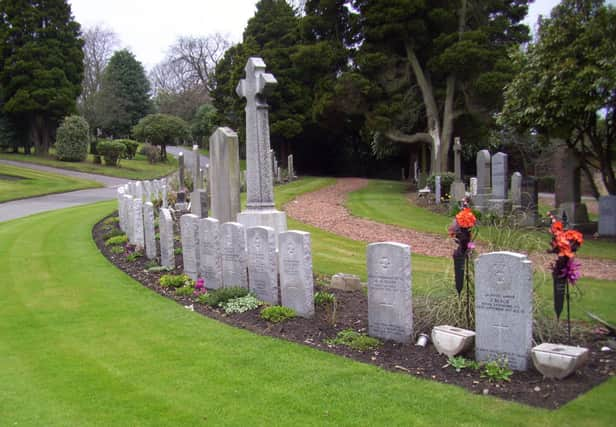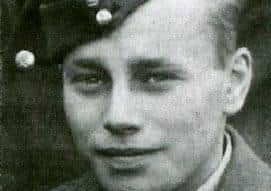Historian Ian Scott looks back on Grangemouth aerodrome’s role during World War Two


Seven years ago it was unveiled as a tribute to the aircrew who died while serving at Grangemouth aerodrome during World War II.
The exact number of fatalities is hard to calculate but around 80 is a fair estimate.
Advertisement
Hide AdAdvertisement
Hide AdThe air cadets whose idea it was must have been delighted that their plan to honour this lost generation was fulfilled and our thanks is due to them and to my friend, Flying Officer Tom McMorrow, who was such an inspiration before and during the project.


Hundreds of people have visited the site since 2013 and no doubt the thoughts of some will have drifted a mile away to the tranquillity of the beautiful Grandsable Cemetery where many of the fallen lie in a special war graves section not far from the lower gate.
In late 1940 the powers that be decided to turn what had been a base for fighter aircraft into a centre where young pilots would learn to fly the Spitfire and practice the difficult and dangerous arts of formation flying, gunnery and combat tactics which no doubt involved rolls, spins and other breathtaking manoeuvres.
Soon Grangemouth began to fill up with young men in their teens and early twenties from all parts of the UK and from Canada, New Zealand, Australia, the United States, Czechoslovakia, Holland, Belgium, Ireland and, of course, Poland.
Advertisement
Hide AdAdvertisement
Hide AdThe young Poles of the Free Polish Forces who had come to Scotland after the fall of France in 1940 were attached to the Royal Air Force and they were particularly skilled and daring in the air.
In the weeks and months that followed the opening of 58 Operational Training Unit hundreds of pilots completed the relatively short training course using old Mark 1 planes which had seen service in the Battle of Britain and were often the worse for wear.
Many died before they were ever able to engage the enemy. Crashes during training were not uncommon and the Ochils, the hills of Fife and Perthshire and the rising ground of the Braes claimed the lives of many as they returned from their dangerous exercises.
Some, sadly, came to grief within sight of the aerodrome.
One of them was the Pole, Sergeant Pilot Eugeniusz Lukomski who has a special place of honour at the Spitfire memorial.
Advertisement
Hide AdAdvertisement
Hide AdSergeant Lukomski had trained in England as an air gunner and was sent to Grangemouth in October 1941.
Just a few weeks later on November 24 while flying Spitfire X4859 above Avondale estate in formation prior to landing he entered a wisp of cloud and, for reasons that were never discovered, went into a spin and plunged to the ground.
Maybe his engine stalled or he touched another plane – we will never know.
He was taken, still alive, from the wreckage and brought to the Officers’ Mess at Avondale House but died shortly afterwards in the medical facility at Polmont Park. He was just 23 years of age.
Advertisement
Hide AdAdvertisement
Hide AdThe memorial plane bears the same number as the one he was flying on that fateful day.
Today he lies alongside his comrades from all parts of the free world.
Grandsable is a place that everyone in this district, and perhaps especially our children, should visit.
It is sad of course but uplifting too that young men, scarcely more than children themselves, should travel thousands of miles from their homes to risk, and lose, their lives as part of the struggle to combat the advance of fascism and help maintain the precious freedom we enjoy today.
Comment Guidelines
National World encourages reader discussion on our stories. User feedback, insights and back-and-forth exchanges add a rich layer of context to reporting. Please review our Community Guidelines before commenting.